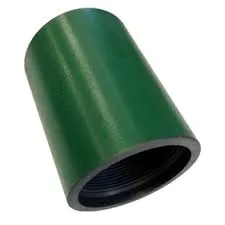- Afrikaans
- Albanian
- Amharic
- Arabic
- Armenian
- Azerbaijani
- Basque
- Belarusian
- Bengali
- Bosnian
- Bulgarian
- Catalan
- Cebuano
- Corsican
- Croatian
- Czech
- Danish
- Dutch
- English
- Esperanto
- Estonian
- Finnish
- French
- Frisian
- Galician
- Georgian
- German
- Greek
- Gujarati
- Haitian Creole
- hausa
- hawaiian
- Hebrew
- Hindi
- Miao
- Hungarian
- Icelandic
- igbo
- Indonesian
- irish
- Italian
- Japanese
- Javanese
- Kannada
- kazakh
- Khmer
- Rwandese
- Korean
- Kurdish
- Kyrgyz
- Lao
- Latin
- Latvian
- Lithuanian
- Luxembourgish
- Macedonian
- Malgashi
- Malay
- Malayalam
- Maltese
- Maori
- Marathi
- Mongolian
- Myanmar
- Nepali
- Norwegian
- Norwegian
- Occitan
- Pashto
- Persian
- Polish
- Portuguese
- Punjabi
- Romanian
- Russian
- Samoan
- Scottish Gaelic
- Serbian
- Sesotho
- Shona
- Sindhi
- Sinhala
- Slovak
- Slovenian
- Somali
- Spanish
- Sundanese
- Swahili
- Swedish
- Tagalog
- Tajik
- Tamil
- Tatar
- Telugu
- Thai
- Turkish
- Turkmen
- Ukrainian
- Urdu
- Uighur
- Uzbek
- Vietnamese
- Welsh
- Bantu
- Yiddish
- Yoruba
- Zulu
Key distinctions between casing and tubing in oil and gas operations
Understanding the Differences Between Casing and Tubing in Oil and Gas Production
In the oil and gas industry, the terminology can sometimes be confusing, especially when discussing important components such as casing and tubing. Both are essential for the successful extraction of hydrocarbons, but they serve different purposes and are made from different materials. This article explores the distinctions between casing and tubing, their functions, and their significance in the drilling process.
1. Definitions and Functions
Casing is a series of steel pipes that are installed in a drilled wellbore to provide structural integrity and prevent the collapse of the well. It also protects the well from contaminants and ensures that the surrounding geological formations remain stable throughout the life of the well. Essentially, casing creates a barrier between the well and the surrounding formation, known as the wellbore.
In contrast, tubing is a smaller pipe that runs inside the casing. Once the well has been completed and production begins, tubing is used to transport the hydrocarbons from the reservoir to the surface. Tubing can also be used for injecting fluids into the well for various operations, such as enhanced oil recovery or managing reservoir pressure.
Casing pipes are typically made of heavy-duty steel to withstand the high pressures encountered deep within the earth. They must be robust enough to support the weight of the surrounding rock and resist corrosion from the fluids encountered. Casing comes in several sizes and grades, selected based on the wellbore's anticipated conditions.
Tubing is generally lighter and thinner than casing, designed for flexibility to accommodate the dynamic environment of the well while allowing for efficient fluid transport. The material used for tubing is often still high-strength steel, but depending on the specific application, it might also include polymers or other materials that can withstand corrosive environments.
what are the differences between casing and tubing?

3. Installation Procedures
The installation of casing happens after the drilling phase is complete. Once the well has been drilled to the necessary depth, sections of casing are lowered into the wellbore and then cemented in place. The cement provides additional support and seals any potential pathways for unwanted fluids to migrate between different geological formations.
Tubing is installed after the casing. Once the well is ready for production, a smaller diameter tubing string is threaded through the casing to allow the flow of oil or gas. This setup can often be adjusted or replaced separately without needing to disturb the casing.
4. Purpose and Importance in Operations
The primary purpose of casing is to ensure the stability and safety of the wellbore while protecting both the well and the surrounding environment from contamination. Without proper casing, a well could collapse or allow unwanted fluids to enter, causing significant operational and environmental challenges.
On the other hand, tubing's primary purpose lies in the production phase of oil and gas operations. The design and integrity of the tubing are crucial for efficient extraction. If the tubing fails, it can lead to costly production stoppages and necessitate complex workover operations to replace the piping.
5. Conclusion
In summary, casing and tubing play pivotal roles in the oil and gas industry, serving different but complementary functions. Casing provides structural support and protects the integrity of the well, while tubing facilitates the flow of hydrocarbons to the surface. Understanding these differences is crucial for professionals in the industry, as they directly impact the efficiency and safety of drilling and production operations. Proper selection, installation, and maintenance of both casing and tubing are essential to ensure the long-term success of any oil and gas venture. As technology continues to evolve, advancements in materials and designs may further improve the effectiveness of these essential components in the future.
-
Tubing Pup Joints: Essential Components for Oil and Gas OperationsNewsJul.10,2025
-
Pup Joints: Essential Components for Reliable Drilling OperationsNewsJul.10,2025
-
Pipe Couplings: Connecting Your World EfficientlyNewsJul.10,2025
-
Mastering Oilfield Operations with Quality Tubing and CasingNewsJul.10,2025
-
High-Quality Casing Couplings for Every NeedNewsJul.10,2025
-
Boost Your Drilling Efficiency with Premium Crossover Tools & Seating NipplesNewsJul.10,2025







